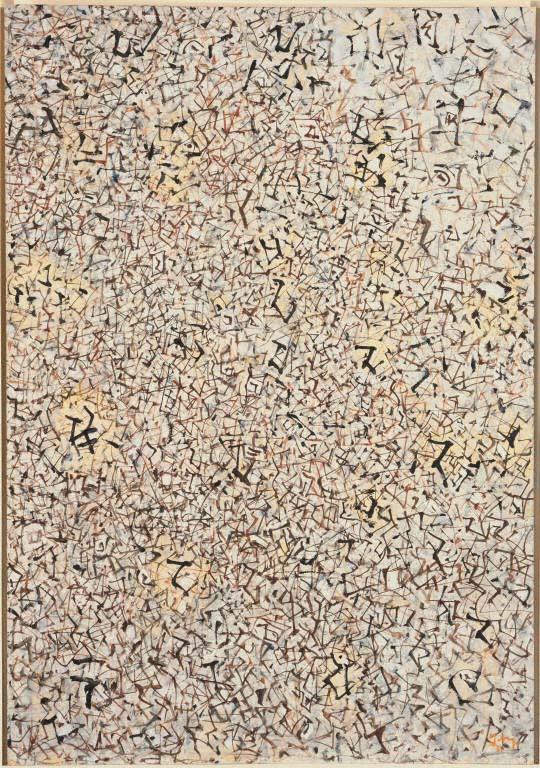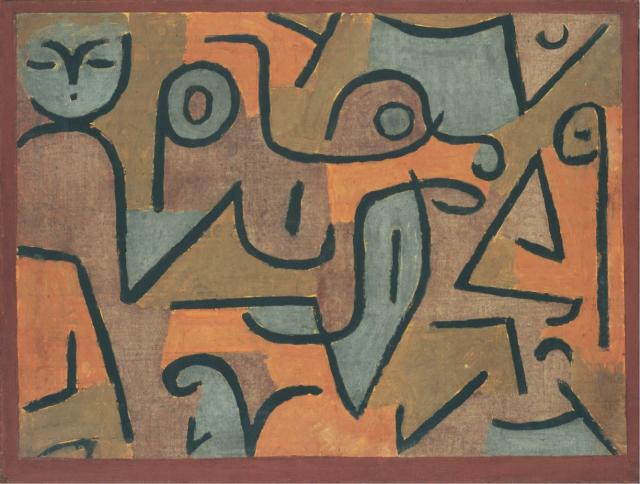
Theodoros Stamos, The Sacrifice of Kronos, No. 2, 1948, Oil on hardboard, 48 x 36 in. The Phillips Collection, Washington, DC, Acquired 1949 © Estate of Theodoros Stamos, New York
Taking inspiration from the major theme of music in Ten Americans: After Paul Klee, we paired 11 staff members with 11 works from the exhibition and asked them to respond to create a playlist in response to their individual artwork. Remy Kauffmann, Stewardship Manager for Corporate Relations and Partnerships, created this playlist in response to Theodoros Stamos’s “The Sacrifice of Kronos.”
When I looked at this artwork, I immediately saw the Earth and a person below it, seemingly crushed by the weight of the world, and I wanted my playlist to reflect that sense of helplessness. It definitely isn’t the most uplifting, but with everything going on in the world today and how divided it seems to be on most issues, I felt that this painting perfectly depicts how overwhelming life can be sometimes. The last two songs are more hopeful, because I always want to believe there is a light at the end of the tunnel, even if we can’t always see it at the time.
Remy Kauffmann, Stewardship Manager, Corporate Relations and Partnerships
Feeling inspired? Create your own playlist based around works in the exhibition and send it to us at communications@phillipscollection.org and we may feature it on our blog and social media.


